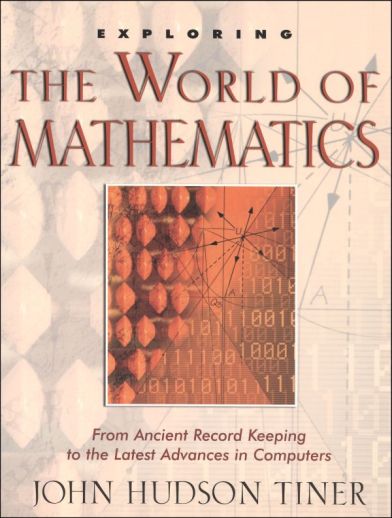We use cookies to make your experience better. To comply with the new e-Privacy directive, we need to ask for your consent to set the cookies. Learn more.
Exploring the World of Mathematics
This fascinating book explores many different facets of mathematics, and is an intriguing read for anyone - whether or not they enjoy the actual subject! It begins with a chapter which discusses the calendar - how it came about, problems and changes that were corrected and re-corrected, how the months were named and the days were divided amongst them, different people who influenced the calendar, and finally the system that we have today. Did you know that our calendar will have to be adjusted again, assuming we reach the year 5329? By then, our current calendar will be off an entire day. The text is so interesting it's hard not to just keep reading. Throughout the text, questions, puzzles, and problems are offered as a challenge for students. Some of the topics covered include measuring, practical mathematics, number names and patterns, endless numbers, math for scientists, and computing machines. Lots of history is given with each topic, so students learn not only about the concepts but how they were formed and developed over time to give us the functions we commonly use today. An excellent supplement to any math curriculum, reading a chapter from this book would provide an excellent break from the daily math lessons. 157 pgs. - Melissa
| Product Format: | Softcover Book |
|---|---|
| Brand: | Master Book Publishers |
| Author: | John Hudson Timer |
| Grades: | 6-9 |
| ISBN: | 9780890514122 |
| Length in Inches: | 11 |
| Width in Inches: | 8.5 |
| Height in Inches: | 0.5 |
| Weight in Pounds: | 1 |

